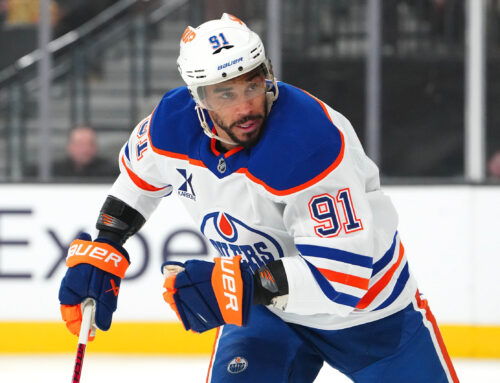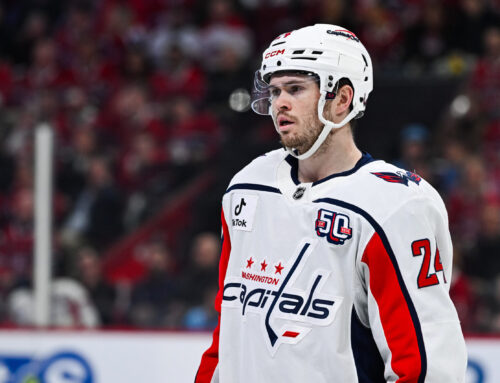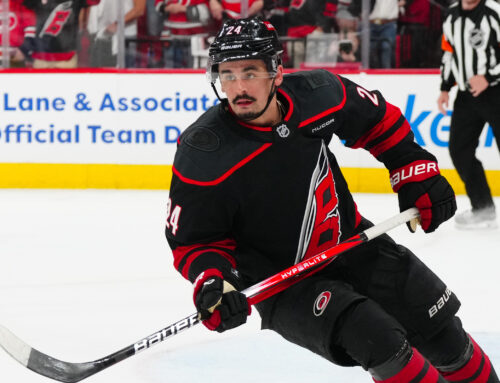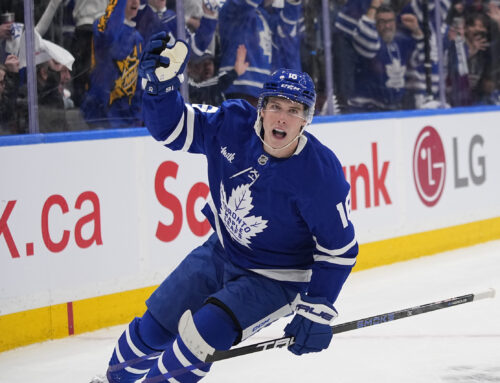
Now that we’re a few games into the season, you may have noticed a few things that are happening with certain teams, especially when it comes to the power play.
San Jose has the worst power play, with zero goals on 14 opportunities. Buffalo leads at 66.7 per cent conversion rate, while teams such as Minnesota, the Rangers and Montreal are in the top 10.
The same thing goes for players. It’s early in the season, and coaches are willing to try certain combinations. The main thing is not to panic and make rash decisions when it comes to dropping players or making earth-shattering trades. At the same time, it’s important to note early trends. Unexpected players getting an opportunity on the top power-play unit might be able to stick it out there for a while if they produce.
Sticking there is the key part. Richard Panik has been playing some minutes on the top power-play unit in Washington, but expect that to change now that Evgeny Kuznetsov is back from his three-game suspension.
Here are the top 10 takeaways from the power plays this early in the season.
10. Tyler Ennis, Ottawa
To be fair, Ottawa is so bereft of talent that there are not a lot of options for the top unit. However, Ennis having the most minutes of all forwards is a complete surprise. However, despite this plum assignment, remember that Ennis isn’t a productive option. In each of the last three years, he’s produced at a sub-30-point pace. Now he’s up to 19 minutes a game, with five minutes of power-play time per night. If he can’t produce, he won’t keep getting those numbers for long. Expect a lot of movement among the lineup for most of the Sens players this season.
9. Alex Iafallo, Los Angeles
In the one game L.A. has played, they had five power plays and scored on one of them. With so many minutes, ice time was all over the place. A couple of things worth noting is that Anze Kopitar played 4:05 (half a minute more than the next closest forward) and that Iafallo was third among forwards in ice time. I don’t believe there’s much upside with Iafallo, but if he can keep getting significant power-play minutes, expect a breakthrough season.
8. Derick Brassard, Islanders
The Islanders have had just two power plays in two games, but so far it appears as if both units are going to be split pretty evenly. For now, Brassard is on that top unit along with Mathew Barzal and Anders Lee (plus two defensemen). Once upon a time, Brassard was dynamite on the power play, averaging 18 power-play points is six seasons from 2010-11 to 2015-16. Now he’s given another chance in New York, at least temporarily. The Islanders have plenty of average fantasy options (Brock Nelson, Josh Bailey, Jordan Eberle, etc.) that can easily take that spot should Brassard falter.
7. Pat Maroon, Tampa Bay
Maroon has been getting some reps on the top unit in the first three games, but don’t expect that to last for much longer. He’s not productive with the man advantage (zero points so far), and Maroon is a placeholder until Brayden Point gets back from his hip injury. Maybe he’s worth a waiver wire pickup if you’re desperate and there’s no one else available, but you’re probably better off going with someone else.
6. Josh Leivo, Vancouver
Leivo is not only on the top power-play unit, but leads the team in power-play time at 5:41 per game. It will be interesting to see how long this experiment lasts. Leivo had a career-high 14 goals and 24 points last year, his first full season on the league. He has zero points so far this year, and Vancouver has zero power-play goals in 10 opportunities. J.T. Miller is also getting time with the top unit. Meanwhile, Bo Horvat is averaging 3:59 man-advantage minutes per game. You have to assume Leivo won’t last on that top line for long, especially if Vancouver doesn’t score.
5. Kevin Hayes, Philadelphia
Philadelphia has played just one game, and that was in the Czech Republic, so it’s unclear how much of what we saw there is what we will see regularly. However, one of the big takeaways from that one game was that Kevin Hayes was on the top power-play unit with Claude Giroux, Jakub Voracek, James Van Riemsdyk and Shayne Gostisbehere. That puts Sean Couturier and Travis Konecny on the second unit. Again, it’s just one game, but Philly went one-for-three on the power play, so it will be interesting to see how long this lineup lasts.
4. Defensemen on Minnesota
In an era when most teams are loading their power plays with four forwards and one defenseman, the Wild are eschewing that trend by going with three forwards and two defensemen on both units. Matt Dumba and Ryan Suter are on the top unit, while Brad Hunt and Jared Spurgeon man the second unit. The Wild split the time pretty equally, so there’s not a big difference in ice time between the four. This setup will make it tougher for young forwards such as Luke Kunin and Joel Eriksson Ek to get power-play time. It’s also preventing Ryan Donato — who had 16 points in 22 games for the Wild last season — from getting any power-play time.
3. Erik Haula, Carolina
In 2017-18, Haula had 11 goals and 18 points with the man advantage, so we know he can be productive when given the opportunity. Only three games into this season, and Haula has seen an increase in the percentage of the team’s power-play time each game. Haula has now averaged 3:14 on the power play — including 4:34 last night — and has rewarded the Hurricanes with two power-play goals in his last two games.
2. Shea Theodore, Vegas
This is the Theodore that we’ve all been waiting for when it comes to deployment. For the last couple of seasons, the top power-play defenseman has alternated frequently, usually between Brad Hunt, Colin Miller and Theodore. Hunt is now in Minnesota, Miller is in Buffalo, and Theodore is running away with the power-play ice time. Averaging 3:15 a night, that’s 73.4 per cent of all of Vegas’ power-play minutes.
1. Oscar Klefbom, Edmonton
Much of the summer was spent debating who was going to be the quarterback on Edmonton’s top power-play unit. Some thought Darnell Nurse, who had some success there last year, was an automatic shoo-in. Others were hoping a prospect such as Ethan Bear or Evan Bouchard could claim that spot. Klefbom didn’t seem to be much of an option, as he had many past opportunities and wasn’t able to convert. Klefbom is again firmly entrenched in that role, seeing three times as much man-advantage action as either Bear or Nurse. He already has two power-play points, so you need to adjust your predictions for Klefbom for this season.





 CAR
CAR FLA
FLA EDM
EDM BUF
BUF TOR
TOR MTL
MTL ANA
ANA NSH
NSH VAN
VAN
